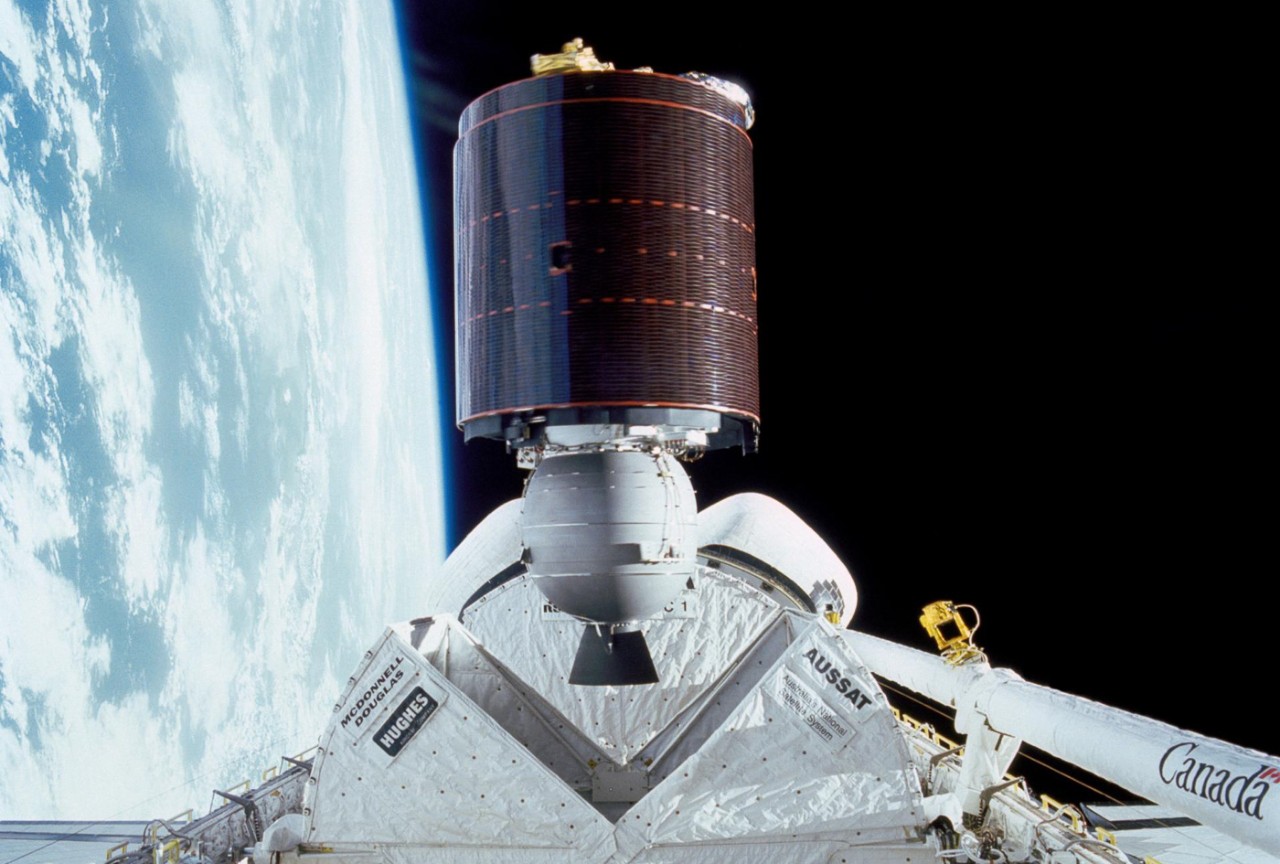
Space Force awards $11.5M grant to UC to fix orbiting satellites
Engineers want to build satellites that can fix other satellites in space
The U.S. Space Force awarded an $11.5 million grant to the University of Cincinnati and two other institutions to develop satellite-based robotics technologies for servicing other satellites or removing debris in orbit.
UC Professor Ou Ma and his research team have been working on the vexing problem for several years. When satellites break, which is surprisingly often, they can become billion-dollar paperweights that put other satellites at risk.
“If you find a car having a problem on the road, you can tow it back to the garage for fixing,” Ma said. “If a satellite goes wrong in orbit, you can’t take it back. You have to live with it. And some problems can even kill the entire mission.”

UC Professor Ou Ma. Photo/Colleen Kelley/UC Marketing + Brand
In his Intelligent Robotics and Autonomous Systems Lab, Ma and his research partners in UC’s College of Engineering and Applied Science will develop the technology needed for a satellite equipped with robotic arms to service another satellite in space. It’s a growing field known as In-space servicing, assembly and manufacturing, with implications for national security and commercialization.
“Refueling, replacing a hardware module or fixing an antenna: On the ground, it would be a minor service, but in space it’s not minor at all,” Ma said.
Some missions might be as simple as retrieving unresponsive satellites so they don’t pose a navigational threat to other orbiting spacecraft or assets.
It’s a huge risk. You don’t want to try making repairs in space without extremely high confidence.
Ou Ma, UC Aerospace Engineering Professor
Many services require physical interactions with the satellites, but an inadvertent bump can send both the servicing and the serviced satellites rotating wildly away from each other.
“It’s a huge risk. You don’t want to make a capture or repair in space without extremely high confidence. So you must thoroughly test the operation in a lab environment,” Ma said.
“This award to Professor Ma is evidence of the value the U.S. Space Force places on UC’s research expertise and accomplishments,” said Patrick Limbach, UC’s vice president for research. “This award will leverage UC’s existing investments in the Space Research Institute for Research and Discovery and ensure our institution continues to be a leader in this field.”
The project also will demonstrate new robotic arm cooperative control technologies. Ma is uniquely qualified for leading this task. He helped develop the robotic arms aboard the International Space Station and has worked on space robotics projects with NASA, the Air Force Research Laboratory, the Canadian Space Agency and the German Aerospace Center.

Students work with robots in UC's Intelligent Robotics and Autonomous Systems Lab. Photo/Ravenna Rutledge/UC Marketing + Brand
Research partners
The project builds on UC’s work in advanced manufacturing and robotics, UC College of Engineering and Applied Science Dean John Weidner said.
“Being able to do this work in the most challenging environment possible will serve us well for terrestrial applications,” Weidner said.
UC will work with Clemson University and the University of Arizona along with four aerospace companies, including Sierra Lobo, Inc., based in Fremont, Ohio.
UC has a storied tradition in aerospace science and engineering. After setting foot on the moon, the late astronaut Neil Armstrong left NASA to teach at UC. Many UC graduates have launched careers at NASA, the Jet Propulsion Laboratory, Lockheed Martin, Boeing, SpaceX and other aerospace research firms across the country.
“It’s significant funding that shows the excellence of our program,” said Paul Orkwis, head of UC’s Department of Aerospace Engineering and Engineering Mechanics.
“You hear people say, ‘it’s not rocket science.’ Well, this is rocket science. It’s hard,” Orkwis said. “Virtually all the work done in space today is autonomous and at a distance. But what we’re learning affects everything we do from cell phones to GPS.”
The grant will support the research work of 16 graduate and undergraduate students per year at UC and its two partner universities, Ma said.
Ma’s collaborators include aerospace engineering professors Donghoon Kim, Kelly Cohen and Rajnikant Sharma. Cohen and Ma are part of the UC’s Space Research Institute for Discovery and Exploration, which works with a large group of faculty and students on a variety of projects ranging from unmanned and autonomous vehicles to supersonic propulsion.
Featured image at top: The space shuttle Discovery deploys a satellite during a 1985 mission. Photo/NASA

An engineering student uses a device that can detect imperfections in surfaces in UC's Intelligent Robotics and Autonomous Systems Lab. Photo/Andrew Higley/UC Marketing + Brand
Next Lives Here
The University of Cincinnati is leading public urban universities into a new era of innovation and impact. Our faculty, staff and students are saving lives, changing outcomes and bending the future in our city's direction. Next Lives Here.
Related Stories
UC's art collection on display at the Contemporary Arts Center
January 5, 2026
University of Cincinnati leaders joined WVXU's Cincinnati Edition to talk about the university’s 200-year-old art collection, a new exhibition at the Contemporary Arts Center and the release of a companion book exploring the collection’s role in education and public engagement.
What's behind the mysterious rise of migraines?
January 5, 2026
Weather patterns such as extreme heat and storm conditions have been linked to migraine attacks, and research shows those environmental conditions are becoming more common. As National Geographic recently reported, one of the leading theories behind this mysterious rise is that climate change may be playing a role.
UC biochemistry student explores world of taste
January 5, 2026
A University of Cincinnati biochemistry student changed her career trajectory after being inspired by internships with a European Fortune 500 company.
